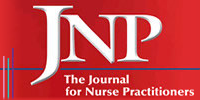Jane Kapustin, PhD, CRNP - Figure 12
Management of Hyperglycemia in T2DM: Sex / Ethnic / Racial / Genetic Differences
Other considerations when presented with a patient with possible T2DM include gender, ethnic and racial variation, as well as genetic differences.[2] Little is known about some of the possible genetic differences. It is known that type 2 diabetes is a polygenic form of chronic disease, meaning that there are many places in the genetic spectrum where the genesis of a patient’s diabetes may fall. For example, there is more insulin resistance among Latinos, whereas East Asians have more β-cell dysfunction. Gender may also correlate with concerns about adverse events; for example, bone loss from treatment with thiazolidinediones (TZDs) is of more concern among older female patients, simply because these patients are at increased risk of osteopenia or osteoporosis. Kapustin J. J Nurse Pract. 2014; 00:00 – 00.
References
Inzucchi SE, Bergenstal RM, Buse JB, et al. Management of hyperglycemia in type 2 diabetes: A patient-centered approach. Position statement of the American Diabetes Association (ADA) and the European Association for the Study of Diabetes (EASD). Diabetes Care. 2012;35:1364-1379.
